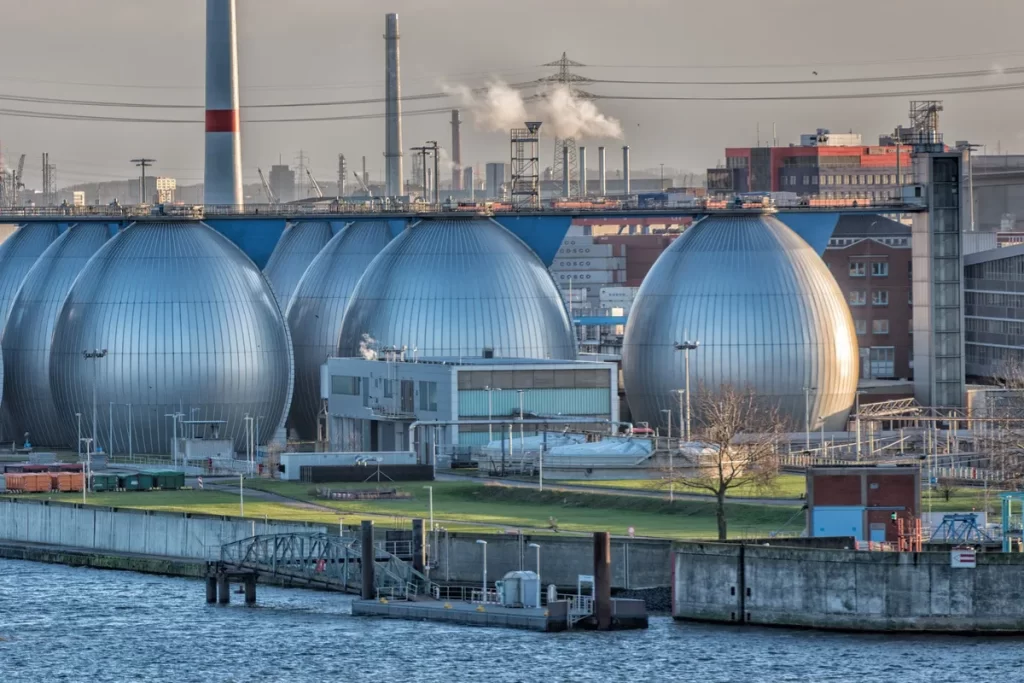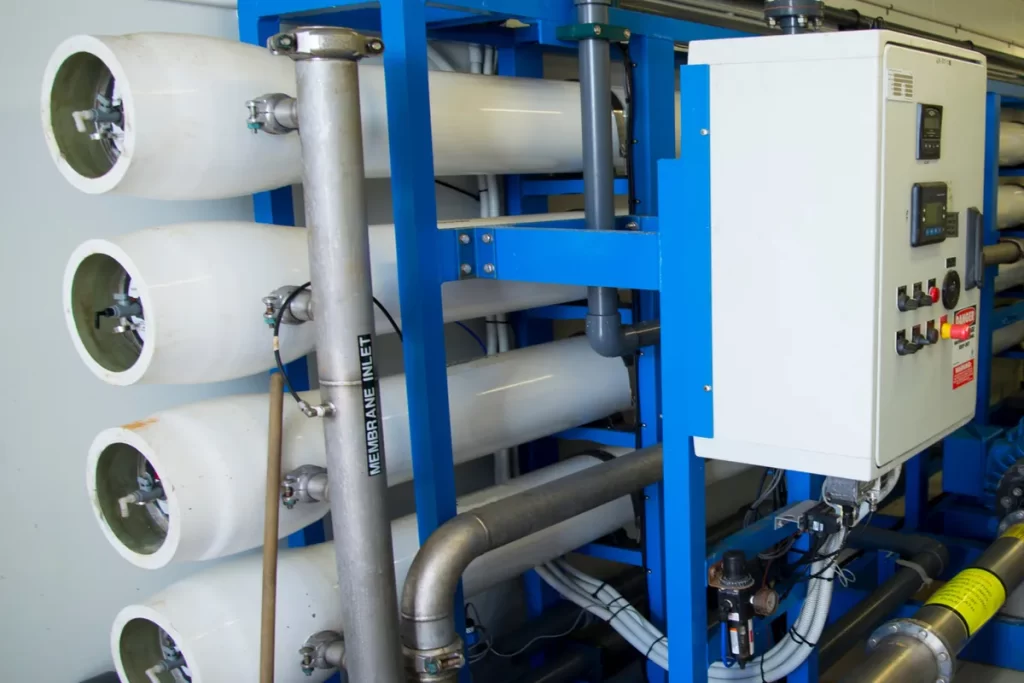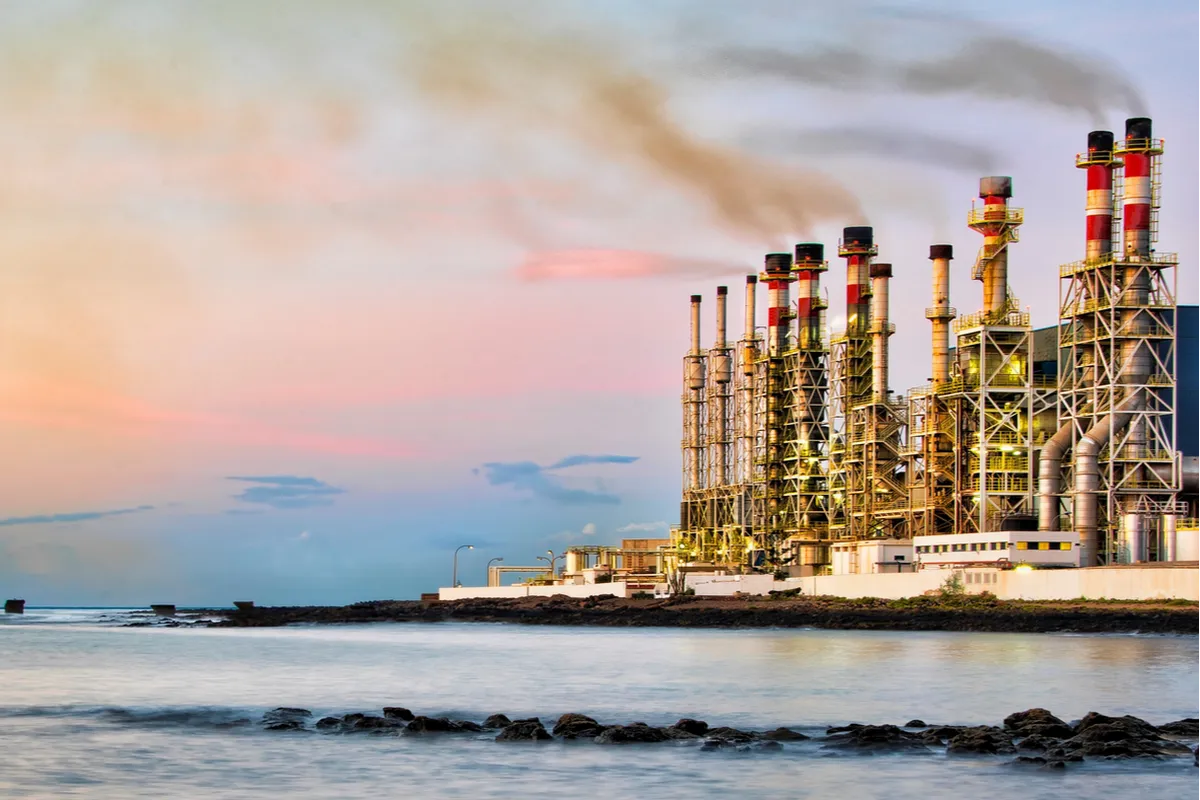As the world’s population continues to grow and water scarcity becomes an increasingly pressing issue, the need for alternative water sources has never been more critical. One such alternative is desalination, the process of removing salt and impurities from seawater or brackish water to produce fresh, potable water. But what are the environmental impacts of desalination, and how can we balance our water needs with sustainable practices?
Some of the main environmental impacts of desalination include energy consumption, brine disposal, and marine life impacts. In this article, we’ll explore the pros and cons of desalination and discuss potential solutions for mitigating its environmental impact.
Environmental Impact of Desalination
Despite its many advantages, desalination has its fair share of drawbacks, particularly concerning its environmental impact. Some of the major concerns include:
Energy Consumption
Desalination is an energy-intensive process, with most plants relying on fossil fuels to power their operations. This high energy consumption can lead to increased greenhouse gas emissions, contributing to climate change. However, there are ongoing efforts to develop and implement renewable energy sources, such as solar and tidal energy, to reduce the carbon footprint of desalination plants.
The amount of energy required for desalination varies depending on the type of technology used. The most common desalination technologies include:
- Multi-stage flash distillation (MSF)
- Multi-effect distillation with thermal vapor compression (MED-TVC)
- Multi-effect distillation (MED)
- Mechanical vapor compression (MVC)
- Reverse osmosis (RO)
For each of these technologies, the energy consumption can be measured in kWh/m3, which is the amount of energy required to produce one cubic meter of fresh water. The table below shows the typical energy consumption for each desalination technology [1]:
| Treatment Process | Electrical Energy Consumption (kWh/m3) | Thermal Energy Consumption (kJ/kg) | Electrical Equivalent for Thermal Energy (kWh/m3) | Total Equivalent Energy Consumption (kWh/m3) |
|---|---|---|---|---|
| MSF | 4 – 6 | 190 – 390 | 9.5 – 19.5 | 13.5 – 25.5 |
| MED-TVC | 1.5 – 2.5 | 145 – 390 | 9.5 – 25.5 | 11 – 28 |
| MED | 1.5 – 2.5 | 230 – 390 | 5 – 8.5 | 6.5 – 11 |
| MVC | 7 – 12 | None | None | 7 – 12 |
| RO | 3 – 5.5 | None | None | 3 – 3.5 (Up to 7 with Boron treatment) |
As you can see, the energy consumption varies widely depending on the technology used. Reverse osmosis is the most energy-efficient technology, while MSF and MVC are the least efficient.
Brine Disposal
A byproduct of the desalination process is the production of brine – a highly concentrated salt solution. If not managed properly, the disposal of brine can lead to increased salinity levels in the surrounding water bodies, harming marine ecosystems and potentially contaminating nearby freshwater sources.
The discharge of brine effluent into the ocean can cause localized increases in salinity, which can harm marine organisms’ ability to regulate their internal salt levels [2]. This can lead to reduced growth rates, reproductive success, and even death. Additionally, the discharge of brine effluent can result in the destruction of sensitive habitats, such as coral reefs, seagrass beds, and mangroves.
Furthermore, the high salt content of brine effluent can cause changes in the ocean’s hydrodynamics and water chemistry, leading to a decrease in dissolved oxygen levels, which can result in the formation of dead zones. Dead zones are areas of the ocean with extremely low oxygen levels, which can lead to the death of marine life and the collapse of entire ecosystems.
Marine Life Impacts
The intake and discharge systems of desalination plants can negatively affect marine life. Seawater intake systems may inadvertently trap and kill fish and other marine organisms, while the discharge of brine can disrupt local ecosystems due to its high salinity and temperature [3].
The chemicals and heavy metals present in brine effluent can also have negative impacts on marine life and the surrounding environment. For example, copper contamination from MSF effluents can be toxic to marine organisms, while chemicals such as biocides and anti-scale additives can harm marine life and disrupt the balance of the ecosystem.

The Advantages of Desalination
There’s no denying that desalination has its benefits. For many countries and regions with limited freshwater resources, desalination can provide a reliable and stable water supply. In fact, desalination has been hailed as a crucial tool for sustainable water management.
Some of the key advantages of desalination include:
Drought Resistance
Desalination plants don’t rely on rainfall, which makes them an ideal solution for regions prone to droughts. As climate change exacerbates water scarcity, desalination offers a dependable water source even during extended dry periods [4].
Reduced Pressure on Natural Water Resources
By offering an alternative water source, desalination helps alleviate stress on rivers, lakes, and groundwater sources [5]. This reduction in demand for natural water resources contributes to their long-term sustainability and health.
Support for Agriculture
Desalinated water can be used for irrigation, promoting food security and supporting sustainable agriculture in arid regions. For instance, farmers in water-scarce areas can utilize desalinated water to grow crops, boosting local food production and reducing reliance on imported goods [6].
Enhanced Water Security
Desalination enhances water security by diversifying water supply sources, making communities less vulnerable to disruptions in traditional water sources. As a result, cities and regions with desalination facilities can better withstand potential water crises [7].
Technological Advancements
As desalination technology advances, the process becomes more energy-efficient and cost-effective. Innovations in membrane materials, energy recovery systems, and operational strategies have significantly reduced the energy requirements and overall costs of desalination plants, making them more accessible to communities worldwide.
Supporting Urbanization and Industrial Growth
Desalinated water can meet the growing demands of urban and industrial sectors in water-scarce regions. By providing a stable water supply, desalination enables economic development, infrastructure expansion, and population growth in areas where water scarcity would otherwise be a limiting factor.
Disaster Preparedness and Emergency Response
In the event of natural disasters or emergencies that disrupt conventional water supplies, desalination plants can quickly ramp up production to provide potable water to affected communities. This resilience ensures that people have access to safe drinking water during challenging times.
Balancing Water Needs and Sustainability
To address the environmental impact of desalination and promote sustainable practices, several strategies can be employed:
Improve Energy Efficiency and Adopt Renewable Energy Sources
By investing in research and development, we can continue to improve the energy efficiency of desalination plants [8]. Implementing renewable energy sources, such as solar, wind, or tidal energy, can further reduce the carbon footprint of these facilities and promote sustainability.
Implement Brine Management Strategies
To mitigate the negative effects of brine disposal, desalination plants should adopt proper management strategies [9]. These may include brine dilution, treatment and discharge through specialized diffuser systems, or even converting the brine into useful products like road de-icing agents, fertilizer, or table salt.

Optimize Intake and Discharge Systems
Incorporating advanced intake and discharge systems can help minimize the impact on marine life. For example, using wedge-wire screens or low-velocity intake systems can reduce the likelihood of trapping fish and other organisms. Additionally, effective diffuser systems can help disperse the brine discharge more evenly, reducing its impact on the surrounding ecosystem [10].
Emphasize Water Conservation and Efficiency
Desalination should be viewed as a complementary solution to traditional water sources, not a replacement. By promoting water conservation and efficiency measures, such as reducing faucet water usage and optimizing dishwasher water consumption, we can reduce our overall water demand and lessen our reliance on desalination.
The Future of Desalination and Sustainability
As the global need for fresh water continues to rise, desalination will likely play an increasingly important role in meeting those demands. By continually improving the technology and adopting best practices for environmental stewardship, desalination can be a vital tool in achieving a sustainable and water-secure future [11].
However, it is essential to recognize that desalination is only one piece of the puzzle. A comprehensive approach to water management should also prioritize conservation, efficiency measures, and the exploration of alternative water sources, such as water reuse and rainwater harvesting. By combining these strategies, we can create a more resilient and sustainable global water system.
Frequently Asked Questions
Q: Is desalination a sustainable solution for water scarcity?
A: Desalination can be a sustainable solution when implemented responsibly, taking into consideration its environmental impact. This includes improving energy efficiency, using renewable energy sources, managing brine disposal, and protecting marine life.
Q: What are the main environmental concerns associated with desalination?
A: The primary environmental concerns related to desalination include high energy consumption, brine disposal, and the impact on marine life due to intake and discharge systems.
Q: How can the environmental impact of desalination be reduced?
A: The environmental impact of desalination can be reduced by improving energy efficiency, incorporating renewable energy sources, implementing proper brine management strategies, optimizing intake and discharge systems, and promoting water conservation and efficiency measures.
Q: How does desalination affect marine life?
A: Desalination can affect marine life through the intake and discharge systems of the plants. Seawater intake systems can trap and kill marine organisms, while the discharge of brine can disrupt local ecosystems due to its high salinity and temperature.
Q: Are there any alternatives to desalination for addressing water scarcity?
A: While desalination is a valuable tool in addressing water scarcity, there are other alternatives to consider, such as water recycling and reuse, rainwater harvesting, and implementing water conservation and efficiency measures. Each of these approaches can contribute to a more sustainable and diverse water management strategy.
Q: What are the alternatives to seawater for desalination?
A: Seawater is the primary source for desalination, but other sources such as brackish water and wastewater can also be used. Brackish water has a lower salt content than seawater, making it easier and less energy-intensive to desalinate. Wastewater can also be treated and reused for non-potable purposes, reducing the demand for freshwater.

